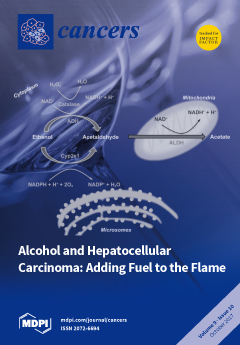The interaction of a small library of cyclic RGD (Arg-Gly-Asp) peptidomimetics with α
Vβ
6 integrin has been investigated by means of competitive solid phase binding assays to the isolated receptor and docking calculations in the crystal structure of the α
V
[...] Read more.
The interaction of a small library of cyclic RGD (Arg-Gly-Asp) peptidomimetics with α
Vβ
6 integrin has been investigated by means of competitive solid phase binding assays to the isolated receptor and docking calculations in the crystal structure of the α
Vβ
6 binding site. To this aim, a rigid receptor-flexible ligand docking protocol has been set up and then applied to predict the binding mode of the cyclic RGD peptidomimetics to α
Vβ
6 integrin. Although the RGD interaction with α
Vβ
6 recapitulates the RGD binding mode observed in α
Vβ
3, differences between the integrin binding pockets can strongly affect the ligand binding ability. In general, the peptidomimetics exhibited IC
50 values for integrin α
Vβ
6 (i.e., the concentration of compound required for 50% inhibition of biotinylated fibronectin binding to isolated α
Vβ
6 integrin) in the nanomolar range (77–345 nM), about 10–100 times higher than those for the related α
Vβ
3 receptor, with a single notable ligand displaying a low nanomolar IC
50 value (2.3 nM). Insights from the properties of the binding pocket combined with the analysis of the docking poses provided a rationale for ligand recognition and selectivity.
Full article






